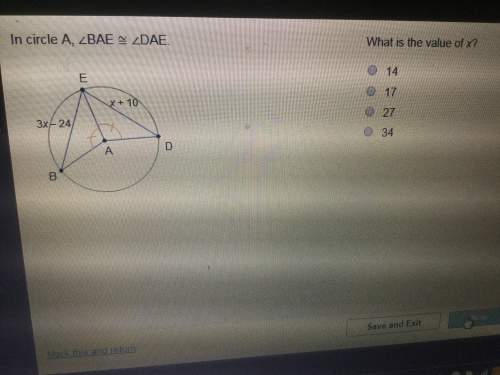
Mathematics, 19.02.2021 18:20 alexaalbanosalas
Look at the graph.
On a coordinate plane, a graph increases through (negative 1, 4), levels off at (0, negative 3), and then increases up through (2, 5).
Leslie analyzed the graph to determine if the function it represents is linear or non-linear. First she found three points on the graph to be (–1, –4), (0, -3), and (2, 5). Next, she determined the rate of change between the points (–1, –4) and (0, -3) to be StartFraction negative 3 minus (negative 4) Over 0 minus (negative 1) EndFraction = StartFraction 1 Over 1 EndFraction = 1. and the rate of change between the points (0, -3) and (2, 5) to be StartFraction 5 minus (negative 3) Over 2 minus 0 EndFraction = StartFraction 8 Over 2 EndFraction = 4. Finally, she concluded that since the rate of change is not constant, the function must be linear. Why is Leslie wrong?
The points (–1, –4), (0, –3), and (2, 5) are not all on the graph.
The expressions StartFraction negative 3 minus (negative 4) Over 0 minus (negative 1) EndFraction and StartFraction negative 3 minus (negative 5) Over 2 minus 0 EndFraction both equal 1.
She miscalculated the rates of change.
Her conclusion is wrong. If the rate of change is not constant, then the function cannot be linear.

Answers: 1


Another question on Mathematics

Mathematics, 20.06.2019 18:04
Missouri has a shape that is similar to a trapezoid with bases of about 198 miles and 276 miles and a height of about 270 miles. what is the area of missouri in square miles? explain how you found the answer.
Answers: 2

Mathematics, 21.06.2019 15:20
Asmall (but heavy) particle placed in a glass of water will follow a zigzag motion because the particle will bounce off of the water molecules it meets. this is called brownian motion. a physicist simulates this on a computer, by varying the distance a particle can travel (called the mean free length), on average, before it collides with a water molecule and assigning the change in motion to be one of 8 directions, each with a similar probability. by running the simulated particle (with the same mean free length) many times she determines that it should take 15 seconds, on average, for the particle to fall to the bottom, with a standard deviation of 1.5 seconds. next she lets a real particle fall through a glass of water and finds that it took 18 seconds. what does she conclude, and why?
Answers: 1

Mathematics, 22.06.2019 01:10
"curse these trig-loving pirates! " devora mutters as she looks at the map. then, after thinking for a moment, she walks back to the entrance of the secret cave, measuring 48 meters along the way. after performing a calculation, devora walks back to the empty treasure, faces the entrance, and turns a certain number of degrees to her left before walking 89 meters to the treasure. supposing that the angle at the cave entrance is acute and that devora's calculations were correct, how many degrees did she turn?
Answers: 2

Mathematics, 22.06.2019 02:00
One of the problems with our current election system is? ?
Answers: 1
You know the right answer?
Look at the graph.
On a coordinate plane, a graph increases through (negative 1, 4), levels off at...
Questions

English, 07.10.2020 02:01







Mathematics, 07.10.2020 02:01







History, 07.10.2020 02:01


Mathematics, 07.10.2020 02:01



English, 07.10.2020 02:01




